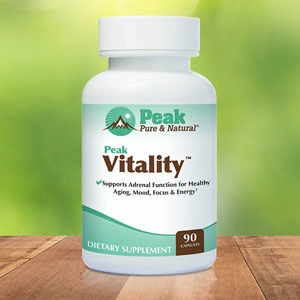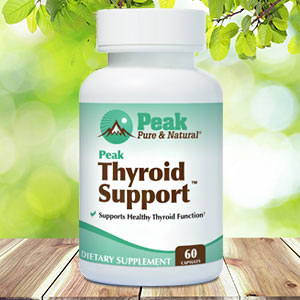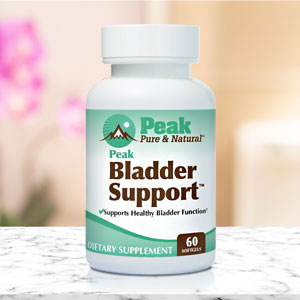Get Easy Health Digest™ in your inbox and don’t miss a thing when you subscribe today. Plus, get the free bonus report, Mother Nature’s Tips, Tricks and Remedies for Cholesterol, Blood Pressure & Blood Sugar as my way of saying welcome to the community!
How to get your estrogen back with benefits

If you’re a perimenopausal woman wondering if you should be using hormone replacement therapy, you might like to know that since 2002, there is increasing new evidence regarding its overwhelming health benefits. And those benefits are supported by peer-reviewed scientific literature.
But benefits and risks vary depending on how you’re getting your hormones.
Let’s look at these benefits and any potential risks, and how you can get started feeling better by improving your hormone levels.
Plant-derived topical estrogen is not the same as synthetic oral estrogen
Make no mistake, the science is very clear: topical estrogen from natural sources applied topically is not the same as synthetic estrogen pills.
You may be aware of synthetic conjugated estrogen, with brand names such as Premarin, Cenestin, and Enjuvia. These conjugated estrogens are prescribed to treat moderate to severe vasomotor symptoms (such as hot flashes/flushes) and vulvar/vaginal atrophy due to menopause.
They have been created in a laboratory and therefore are not metabolized by your body as do naturally derived medicines. This is thought to happen because humans don’t have the enzymes for proper metabolism of molecules that don’t occur naturally.
In fact, it is recommended that you take conjugated (synthetic) estrogen at the “lowest effective dose and for the shortest duration” for safety’s sake.
And doctors know that We know from the Women’s Health Initiative 2009 and 2010 reports in the New England Journal of Medicine that women who take synthetic, chemically modified prescription hormones for extended periods of time have an increased incidence of breast cancer, heart attack and stroke, and pulmonary embolism. We also know that conjugated estrogens do not prevent dementia, but rather, they increase your risk of this.
Natural estradiol (E2) and estriol (E3)
Natural estrogens that are made in a woman’s body are called estrone (E1), estradiol (E2), and estriol (E3). These are also made in nature (plants) and can be mixed into creams for therapeutic dosing.
Unlike applying these hormones to your skin, taking even natural estrogen by mouth carries some health risks. It is thought that because when you swallow them, they get absorbed by your intestines, pass immediately via the portal vein to your liver for detoxification and this can produce unnatural metabolites.
It is not so with creams, which absorb directly into your bloodstream and then go to target organs where they need to be. There is no question that Estriol (E3) and estradiol (E2) cream or troche (mouth lozenge) are better for you than conjugated estrogens taken as pills.
Health benefits of bio-identical transdermal estrogen
Let’s look at the reasons why a peri-menopausal woman would want to consider taking bio-identical hormone replacement therapy (BHRT).
First off, symptoms of menopause can be quite annoying and are effectively reversed using BHRT. Those symptoms include the following:
- Hot flashes/night sweats
- Vaginal dryness
- Irregular menstrual bleeding
- Mood changes
- Chills
- Sleep problems
- Weight gain from slowed metabolism
Estriol (E3) naturally converts to estradiol (E2) in your body. The great news is that natural transdermal estrogens E3 and E2 work well for reducing menopausal symptoms — so you don’t have to worry about the health risks that would come if you took conjugated synthetic estrogen pills for this.
A study using estriol therapy that was reported in the November 1987 Hormone and Metabolic Research showed that it reduced menopausal symptoms in 92% of subjects, and completely eliminated hot flashes and sweating in 71% of the subjects. It completely eliminated depressed moods in 24% and this was reduced in severity for another 33%. It also reduced headaches by two-thirds and skin improved in some of the subjects. And there were no significant side effects reported.
Not only can you reverse these symptoms, but there are also some important long-term health benefits to know about. Let me give you an overview of these.
1. Improves sexual desire and functions
For many women, estrogen is needed to help improve vaginal dryness, burning or pain during sex. Apparently, vaginal administration of 50 mg ethinyl estradiol results in circulating ethinyl estradiol levels equivalent to those achieved after oral ingestion of 10 mg ethinyl estradiol.
2. Prevents memory loss
Animal and human studies show that transdermal estrogen replacement therapy, when started before menopause, decreases memory loss in older age. In the Italian Longitudinal Study on Aging reported in 1998, researchers found that among the 2,816 women aged 65 to 84 years who were followed, the rate of Alzheimer’s disease was only four times fewer among estrogen users compared with the general female population of the same age and with multiple other risk factors.
Even if estrogen replacement is started after the onset of menopause, it delays, Alzheimer’s dementia onset, according to a study reported in a 1996 Lancet article.
Among the 156 women in the study, there were 60% fewer cases and onset was delayed compared with women who did not take estrogen… with even fewer cases among the women who had used estrogen longer than a year.
3. Improves heart health
Transdermal estrogen lowers bad cholesterol (LDL) and raises good cholesterol (HDL). Moreover, coronary artery spasm (this precipitates a heart attack by squeezing down areas of the heart arteries where there is already atherosclerotic plaque), is decreased with the use of estrogen and also estrogen + progesterone.
4. Reduces breast cancer risk
Estrogen plus progesterone clearly decreases breast cancer risk. This was shown to be true in a double-blind placebo-controlled trial of women given estrogen plus progesterone prior to breast surgery reported in 1995. This was shown to be true in a randomized double-blind study reported in 1998; and also, in a primate animal study reported in 2007.
In a large study of 30,000 women reported in 2004, those who used estriol only had no increased rate of breast cancer, while those who used “estrogen” only did. In a large case-control study of 3345 women, the risk for breast cancer among estriol users was the same as nonusers.
5. Strengthens bones
Transdermal estrogen supplementation reduces bone fracture rates in postmenopausal women; subjects using only a low dose of only 0.1 mg per day stopped losing bone density and dramatically reduced their fracture rate as demonstrated in two clinical trials.
6. Improves skin
Did you know that topical estrogen combined with nutrients (such as Hyaluronic Acid, Vitamin C, and other nutraceuticals) can be used topically on your face to improve your skin quality? A 2007 study found that topical estrogen helps increase skin collagen which may improve postmenopausal facial skin.
Editor’s note: Did you know that when you take your body from acid to alkaline you can boost your energy, lose weight, soothe digestion, avoid illness and achieve wellness? Click here to discover The Alkaline Secret to Ultimate Vitality and revive your life today!
Sources:
- PREMARIN® (conjugated estrogens tablets, USP) — Pfizer Inc.
- Cenestin — RxList
- Drug Update: February 2017 Issue 1 — National Pharmaceutical Services
- Chlebowski RT, et al. Breast Cancer after Use of Estrogen plus Progestin in Postmenopausal Women — N Engl J Med 2009; 360:573-587.
- Colditz GA, Hankinson SE, Hunter DJ, et al. The use of estrogens and progestins and the risk of breast cancer in postmenopausal women. — N Engl J Med. 1995 Jun 15;332(24):1589-93.
- Risks and Benefits of Estrogen Plus Progestin in Healthy Postmenopausal Women — JAMA. 2002;288(3):321-333.
- Conjugated estrogens (oral) (Enjuvia, Premarin) — eMedicineHealth.com
- Lauritzen C. Results of a 5 years prospective study of estriol succinate treatment in patients with climacteric complaints. — Horm Metab Res. 1987 Nov;19(11):579-84.
- Synthetic Estrogens — ScienceDirect
- Craig MC, Murphy DG. Estrogen therapy and Alzheimer’s dementia. — Ann N Y Acad Sci. 2010 Sep;1205:245-53
- Baldereshi M, Di Carlo A, et al. Estrogen-replacement therapy and Alzheimer’s disease in the Italian Longitudinal Study on Aging. — Neurology 1998 Apr;50(4):996-1002.
- Tang MX. Jacobs D, et al. Effect of oestrogen during menopause on risk and age at onset of Alzheimer’s disease. — Lancet 1996 Aug17;348(9025):429-32.
- Minshall RD, et al. Ovarian steroid protection against coronary artery hyperreactivity in rhesus monkeys. — J Clin Endocrinol Metab 1998;83(2):649-659.
- Chang KJ, et al. Influences of percutaneous administration of estradiol and progesterone on human breast epithelial cell cycle in vivo. — Fertil Steril 1995;63(4):785-791.
- Foidart JM, et al. Estradiol and progesterone regulate the proliferation of human breast epithelial cells. — Fertil Steril 1998;69(5):963-969.
- Wood CE, et al. Effects of estradiol with micronized progesterone or medroxyprogesterone acetate on risk markers for breast cancer in postmenopausal monkeys. — Breast Cancer Res Treat 2007;101(2):125-134.
- Bakken K, et al. Hormone replacement therapy and incidence of hormone-dependent cancers in the Norwegian Women and Cancer study. — Int J Cancer 2004;112(1):130-134.
- Magnusson C, et al. Breast cancer risk following long term oestrogen and oestrogen-progestin replacement therapy. — Int J Cancer 1999;81(3):339-344.
- Lufkin EG, Wahner HW, et al. Treatment of postmenopausal osteoporosis with transdermal estrogen. — Ann Intern Med 1992;117(1):1-9.
- Cicinelli E, Galantino P, et al. Bone metabolism changes after transdermal estradiol dose reduction during estrogen replacement therapy: A 1-year prospective study. — Maturitas 1994;19(3):133-139.
- Effects of topical estradiol on the facial skin collagen of postmenopausal women under oral hormone therapy: a pilot study. Patriarca MT, Goldman KZ, Dos Santos JM, Petri V, Simões RS, Soares JM Jr, Simões MJ, Baracat EC. — Eur J Obstet Gynecol Reprod Biol. 2007 Feb;130(2):202-5. Epub 2006 Jun 23.















